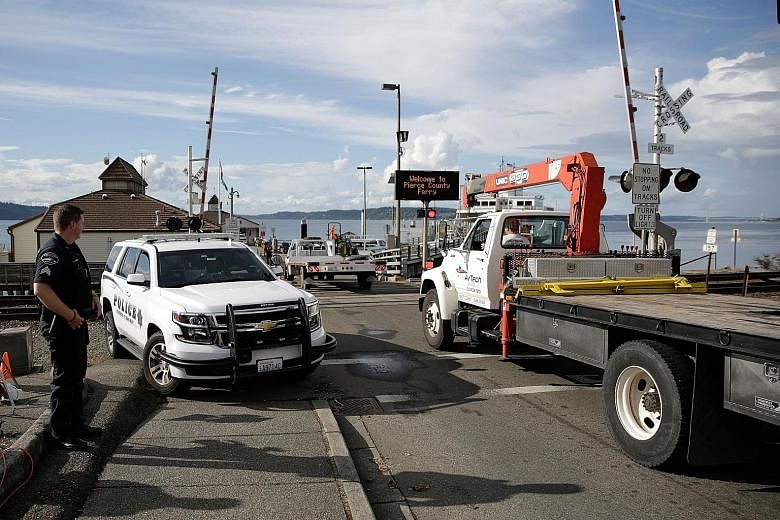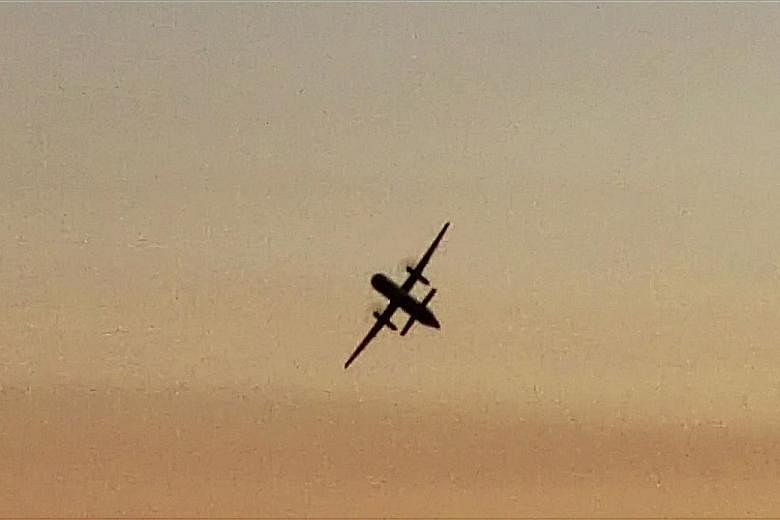SEATTLE • Step inside the cockpit of an empty commercial aircraft and the pilot controls are yours. You do not need a key or any special passcode to power up the plane and fly it away, whether it is a small regional jet or a giant twin-deck Airbus A-380.
The suicide-by-plane last Friday at Seattle's Sea-Tac International Airport, which ended when a rogue airline employee crashed a stolen 76-seat turboprop into an island, has raised fresh questions about aviation security.
To abscond with a parked plane, there are basically just two security barriers in the way: obtaining access to a non-public area, and possessing enough knowledge to operate the aircraft.
The first hurdle was easily jumped by the Horizon Air employee who stole and then crashed a Bombardier Q-400. Relatives and co-workers identified the man as Mr Richard Russell.
As a ground services agent, he was authorised to be in the maintenance area where the plane was parked, said Mr Brad Tilden, chief executive officer of Alaska Air Group, which owns Horizon Air.
"This is aviation in America: The doors to the airplanes are not keyed like a car, there's not an ignition," Mr Tilden said at a news conference last Saturday.
"We secure the airfield and then we have employees that are credentialed and authorised to be there."
Mr Tilden told reporters that the incident "is going to push us to learn from this tragedy and make sure this does not happen again at Alaska or any other airline".
But he and other airline executives declined to say what measures they could take to prevent someone with security badges from doing it again. He said his industry operates on the principle of checking the backgrounds of employees, not locking down airplanes in secure areas.
"The doors to the airplanes are not keyed like a car," he said.
The US Congress is already seeking to tighten the screening of airport employees and may do so with more urgency now, said Ms Mary Schiavo, the former inspector-general of the US Transportation Department. The US has about 900,000 aviation workers, according to the most recent federal data, and Ms Schiavo said screening procedures are "pretty rudimentary".
While pilots undergo periodic medical exams, she noted, airline mechanics and ground crew members are checked on a much more limited basis that does not include mental health exams.
The Federal Bureau of Investigation is leading the investigation into the plane theft, supported by the National Transportation Safety Board, said Ms Debra Eckrote, the NTSB's regional chief in Seattle.
Much of the security imposed after the 2001 terrorist hijackings involves more rigorous screening for passengers and airline employees, along with new rules around access to cockpits in flight and federal procedures for pilots and flight attendants to report colleagues who they feel may not be fit for duty.
But those measures do not apply when a plane is parked and empty. And the US has not imposed similar fitness reporting requirements for other airline employees, such as ramp workers or mechanics, said Mr John Nance, a former airline and air force pilot who now works as an aviation consultant.
"The reality is that airports are huge, messy places with a hell of a lot of people coming in and out," he said. "What that makes us vulnerable to is exactly what happened: Someone who is coming apart at the seams."
BLOOMBERG, WASHINGTON POST, REUTERS


